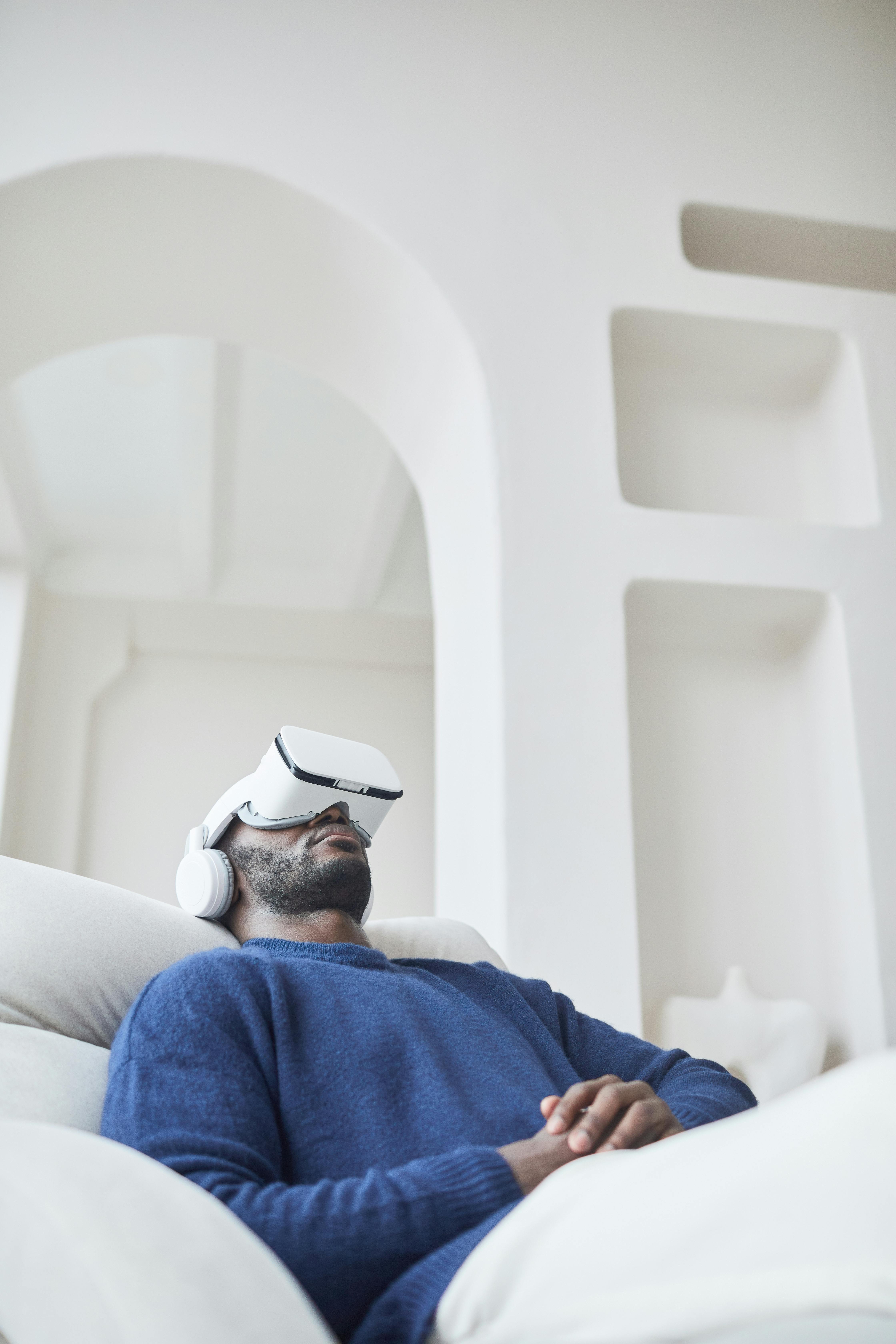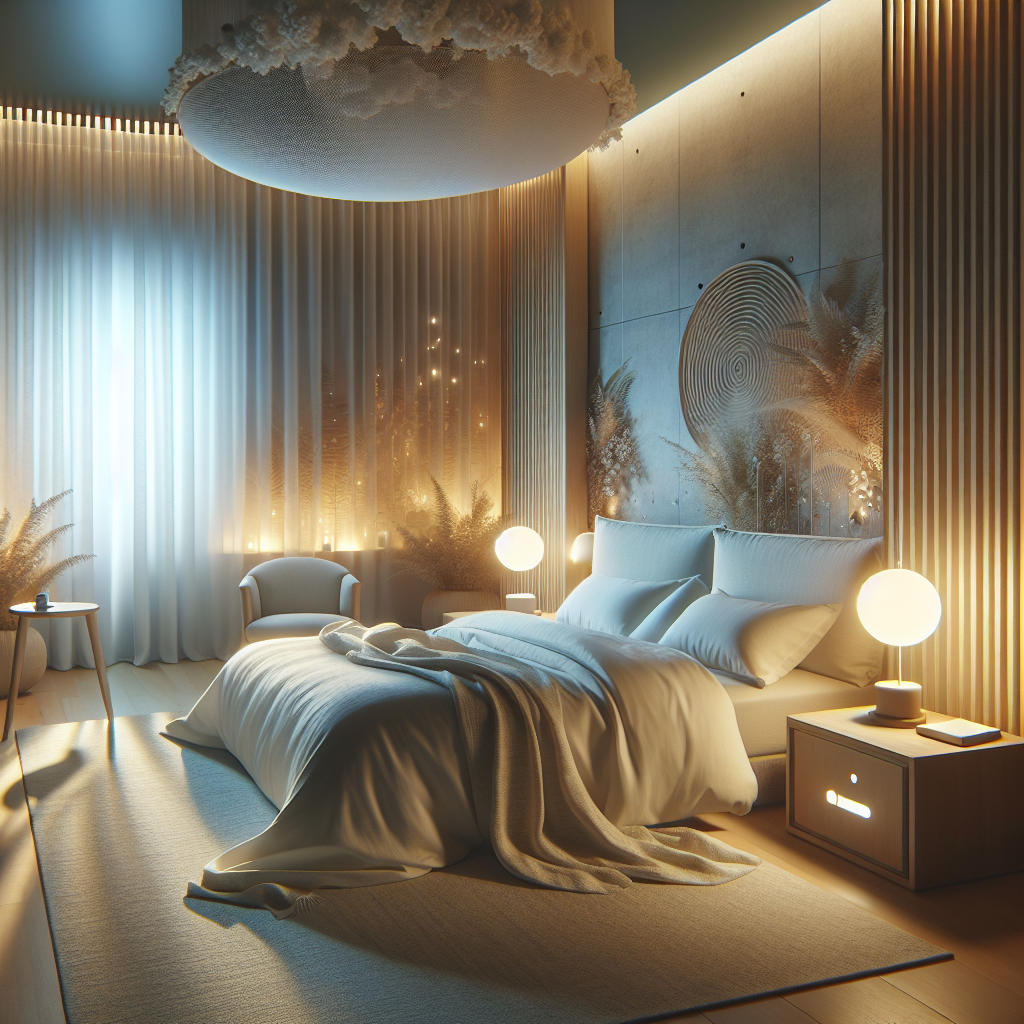Creating a consistent sleep environment can do wonders for your relaxation. By adopting this simple change, you can enhance the quality of your sleep and wake up feeling refreshed and rejuvenated. A consistent sleep environment helps to regulate your body’s internal clock, allowing you to fall asleep faster and stay asleep throughout the night. In this article, we will explore the various ways in which you can transform your bedroom into a peaceful sanctuary, optimizing relaxation and promoting a restful night’s sleep. Discover the power of a consistent sleep environment and unlock the key to a more relaxed and revitalized you.

Creating a Calming Atmosphere
Creating a calming atmosphere in your bedroom is essential for a good night’s sleep and overall relaxation. One important aspect of creating this environment is choosing the right bedding. The comfort and quality of your bedding can greatly impact your sleep quality. Opt for soft, breathable fabrics like cotton or linen that can help regulate your body temperature and keep you comfortable throughout the night.
Maintaining a clean and clutter-free bedroom is another key element in creating a calming atmosphere. A cluttered space can create a sense of stress and anxiety, making it difficult to relax. Take the time to declutter your bedroom and keep it organized. This will not only create a serene environment but also make it easier to unwind and fall asleep peacefully.
Implementing pleasant lighting is also crucial in creating a calming atmosphere. Harsh, bright lights can be disruptive and make it challenging to wind down. Opt for soft, warm lighting options such as bedside table lamps or dimmable overhead lights. This will create a soothing ambiance and help signal to your body that it’s time to relax and prepare for sleep.
Controlling noise levels in your bedroom can significantly impact your ability to relax. Noise disruptions can prevent you from falling asleep or wake you up during the night. Consider using white noise machines or earplugs to block out any unwanted noises, such as traffic or loud neighbors. Creating a peaceful environment through noise control will enhance relaxation and promote better sleep.
Regulating Temperature and Humidity
Regulating the temperature and humidity in your bedroom plays a crucial role in improving relaxation and sleep quality. Optimizing room temperature is important as extreme temperatures can disrupt your sleep. The National Sleep Foundation recommends keeping your bedroom temperature between 60 to 67 degrees Fahrenheit for optimal sleep comfort. Experiment with different temperatures until you find the one that suits you best.
Using humidifiers or dehumidifiers can also contribute to a more relaxing sleep environment. Dry air can cause discomfort, especially during the winter months or in dry climates. Adding humidity to the air can help moisturize your nasal passages and throat, reducing the chances of waking up with a dry mouth or congestion. On the other hand, dehumidifiers can help combat excessive moisture, which can create an uncomfortable and damp environment.
Considering ventilation solutions is another important aspect of regulating temperature and humidity. Proper airflow can help maintain a comfortable sleep environment. Make sure your bedroom is well-ventilated by opening windows, using fans, or installing air conditioning units. Good ventilation allows for fresh air circulation, which can improve air quality and create a more restful sleep environment.

Establishing a Consistent Sleep Schedule
Establishing a consistent sleep schedule is crucial for improving relaxation and promoting healthy sleep patterns. Setting a regular bedtime routine helps signal to your body that it’s time to wind down and prepare for sleep. Engage in activities that promote relaxation such as reading, taking a warm bath, or practicing gentle stretching exercises. Establishing a consistent routine and sticking to it can help train your body and mind to recognize when it’s time to sleep, leading to more restful nights.
Waking up at the same time every day is equally important as it helps regulate your body’s internal clock. Consistency in waking up can improve your overall sleep quality and make it easier to fall asleep at night. Try to resist the temptation of hitting the snooze button and instead be consistent with your wake-up time, even on weekends. Consistency in both sleep and wake times can promote better relaxation and set a strong foundation for healthy sleep habits.
Avoiding napping or keeping it short can also contribute to a consistent sleep schedule. If you find it difficult to fall asleep or stay asleep at night, it may be helpful to limit daytime napping. If you do indulge in a nap, aim for short, power naps that last no longer than 20 minutes. This will help prevent excessive sleepiness during the day and ensure that you’re tired enough to easily fall asleep at your desired bedtime.
Minimizing Electronic Disturbances
In today’s technology-driven world, it’s important to minimize electronic disturbances in the bedroom to improve relaxation and sleep quality. Limiting screen time before bed is an essential step in preparing your mind and body for sleep. The blue light emitted by electronic devices such as smartphones, tablets, and laptops can suppress the production of melatonin, a hormone that helps regulate sleep. Put away electronic devices at least one hour before bedtime to promote relaxation and signal to your body that it’s time to wind down.
Creating a tech-free bedroom is another effective way to minimize electronic disturbances. Keeping your bedroom free from electronic devices can create a peaceful and distraction-free environment. Consider removing TVs, computers, and gaming consoles from your sleep space. Instead, use your bedroom solely for relaxation and sleep-related activities. This will help separate your sleep environment from the distractions and stimulation of electronic devices.
Reducing the number of bedroom electronics can also contribute to a more calming atmosphere. If possible, avoid keeping electronic devices such as alarm clocks or charging stations in close proximity to your bed. The presence of these devices can create mental stimulation and make it harder to relax. Instead, opt for analog alarm clocks or move charging stations to a different room.

Choosing Comfortable Sleepwear
Choosing comfortable sleepwear is an often overlooked aspect of creating a relaxing sleep environment. The right sleepwear can enhance your comfort and contribute to better relaxation. Select sleepwear made from breathable fabrics such as cotton or linen. These fabrics allow for airflow and minimize heat retention, keeping you cool and comfortable throughout the night. Avoid sleepwear made from synthetic materials that can trap heat and lead to discomfort.
Finding the right fit is equally important when choosing sleepwear. Opt for styles and sizes that allow for freedom of movement and don’t restrict your circulation. Tight or constricting sleepwear can negatively affect your sleep quality and make it difficult to relax. Look for designs that prioritize comfort and ease of movement, such as loose-fitting pajamas or nightgowns.
Consider seasonal changes when selecting sleepwear. In warmer months, lightweight and breathable fabrics are ideal to prevent you from overheating. During colder months, opt for sleepwear with added warmth, such as flannel or fleece. Adapting your sleepwear to the seasons will ensure that you maintain a comfortable body temperature and promote relaxation.
Utilizing Relaxation Techniques
Utilizing relaxation techniques can greatly enhance your ability to unwind and achieve a calm state before sleep. Practicing deep breathing exercises is a simple yet effective technique to promote relaxation. Take slow, deep breaths in through your nose, hold for a few seconds, and exhale slowly through your mouth. Focusing on your breath can help quiet your mind and reduce stress levels, making it easier to relax and fall asleep.
Engaging in meditation or mindfulness is another powerful relaxation technique. Set aside some time before bed to meditate or practice mindfulness. Find a quiet space in your bedroom or create a designated area for meditation. Allow yourself to focus on the present moment, observing your thoughts and emotions without judgment. Regular meditation or mindfulness practice can help calm your mind, reduce anxiety, and promote better relaxation.
Trying progressive muscle relaxation can also aid in achieving a deeper state of relaxation. This technique involves gradually tensing and then relaxing each muscle group in your body. Start from your toes and work your way up to your head, consciously tensing and releasing each muscle group for a few seconds. This practice can help release tension and promote physical and mental relaxation.
Using aromatherapy or essential oils can further enhance relaxation. Lavender, chamomile, and ylang-ylang are commonly used essential oils known for their calming properties. Use a diffuser or add a few drops of essential oil to a warm bath before bedtime. The soothing scent will help create a serene atmosphere and promote relaxation.
Considering Color Psychology
Color psychology plays an important role in creating a calming sleep environment. Exploring calming color palettes can help set the tone for relaxation in your bedroom. Soft, muted hues such as blues, greens, and neutrals are often associated with tranquility and can create a soothing atmosphere. Experiment with different color combinations to find the ones that bring you a sense of calmness and relaxation.
Understanding the effects of different colors can guide you in incorporating relaxing colors in your sleep environment. For example, blues and greens are known to promote a sense of calmness and serenity. These colors can help lower blood pressure and reduce anxiety levels. Neutrals like beige, taupe, or soft gray can create a peaceful backdrop and contribute to a relaxing sleep environment. Avoid bold, vibrant colors that may create a sense of excitement or stimulation.
Incorporating relaxing colors in your sleep environment can be done through paint, bedding, décor, and accessories. Consider painting your bedroom walls in soothing colors or adding accents through pillows, rugs, or curtains. The goal is to create a visually relaxing space that promotes a sense of calmness and tranquility.
Promoting a Dark Sleep Environment
Promoting a dark sleep environment is essential for better relaxation and quality sleep. Light exposure can interfere with your body’s natural sleep-wake cycle, making it harder to fall asleep and stay asleep. Using window treatments to block light is an effective way to create a dark sleep environment. Invest in blackout curtains or blinds that can completely block out external sources of light. This will create a cave-like atmosphere that encourages a deeper and more restful sleep.
Eliminating or dimming external light sources is equally important in creating a dark sleep environment. Cover or turn off any electronics that emit light, such as LED alarm clocks or charging indicators. Light from these sources can disrupt your melatonin production and affect the quality of your sleep. Consider using adhesive tape or stickers to cover any small lights that are not easily dimmable.
Selecting sleep masks for light sensitivity can be beneficial if you’re particularly sensitive to light. Sleep masks create complete darkness by blocking out all sources of light. Look for masks made from comfortable, breathable materials that won’t cause discomfort or pressure on your eyes. Ensure that the mask fits securely and does not let any light seep through.
Enhancing Sleep with Comfortable Pillows
Enhancing sleep with comfortable pillows is a crucial part of creating a relaxing sleep environment. Choosing the right pillow type is essential to support your head, neck, and spine alignment. There are various pillow types to choose from, such as memory foam, latex, down, or buckwheat. Each type offers different levels of support and comfort, so it’s important to find the one that suits your sleep preferences and provides the necessary support for your body.
Maintaining pillow hygiene is equally important for a clean and relaxing sleep environment. Pillows can accumulate dirt, dust mites, and allergens over time, which can affect your sleep quality and overall health. Regularly wash pillowcases and pillow protectors to keep them clean and free from allergens. Additionally, follow the manufacturer’s guidelines for washing and caring for your pillows to ensure their longevity and cleanliness.
Testing different pillow heights and firmness is essential to find the perfect fit for your sleep needs. A pillow that is too high or too firm can cause neck and shoulder pain and disrupt your sleep. Experiment with different pillow heights and firmness levels to find the one that provides optimal support and comfort for your individual preferences.
Seeking Professional Advice and Guidance
If you’re struggling to create a consistent and relaxing sleep environment, seeking professional advice and guidance can be beneficial. Consulting with a sleep specialist can help identify any underlying sleep disorders or issues that may be affecting your relaxation and sleep quality. A sleep specialist can provide personalized recommendations and solutions tailored to your specific needs.
Another option to consider is Cognitive Behavioral Therapy for Insomnia (CBT-I). CBT-I is a form of therapy that addresses the thoughts, behaviors, and habits that can disrupt sleep. It focuses on helping you develop healthier sleep patterns and habits to improve relaxation and sleep quality. CBT-I can be delivered by a trained therapist or through self-help resources such as books or online programs.
In conclusion, adopting a consistent sleep environment can greatly enhance relaxation and improve overall sleep quality. By choosing the right bedding, maintaining a clean and clutter-free bedroom, implementing pleasant lighting, controlling noise levels, regulating temperature and humidity, establishing a consistent sleep schedule, minimizing electronic disturbances, choosing comfortable sleepwear, utilizing relaxation techniques, considering color psychology, promoting a dark sleep environment, enhancing sleep with comfortable pillows, and seeking professional advice and guidance, you can create a calm and relaxing space that sets the stage for restful nights of sleep and ultimate relaxation.
